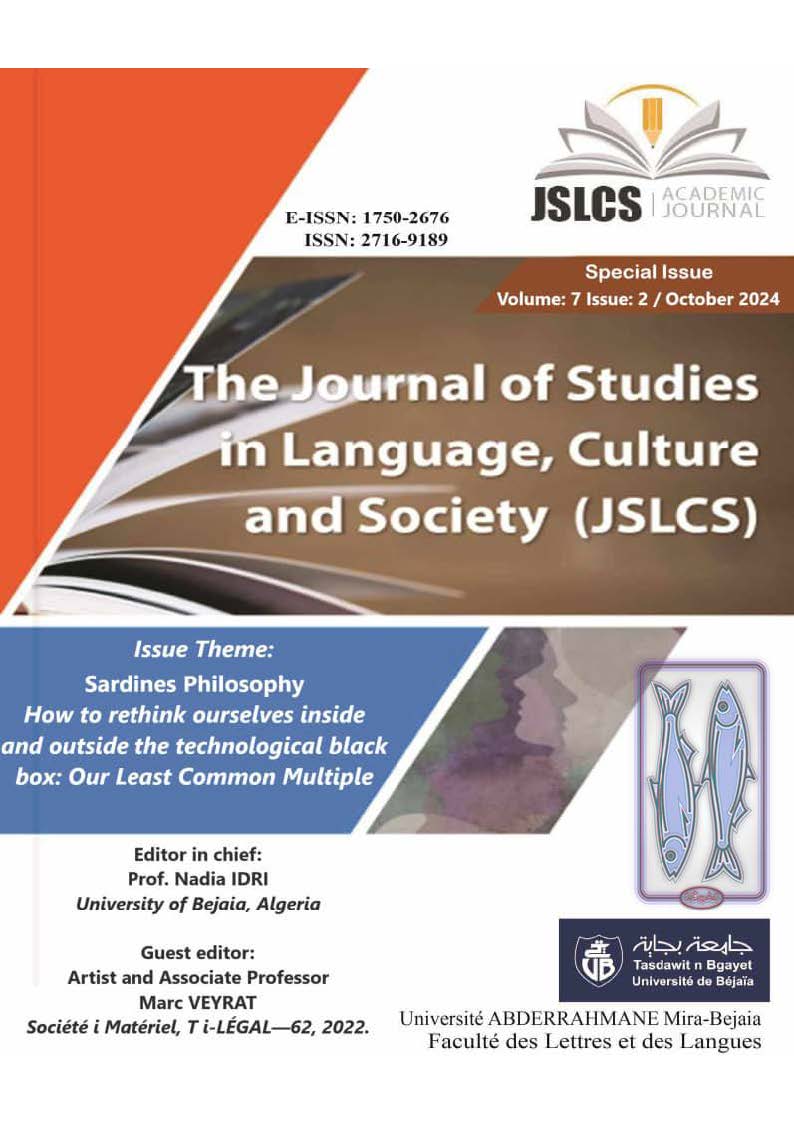The Artificial Intelligence Revolution In University Language Teaching: Applications And Futures]
Keywords:
AI applications, Artificial intelligence, Language skills, Learning, University studentsAbstract
The advent of artificial intelligence (AI) is currently precipitating a global revolution in technology, with profound implications for scientific research and numerous facets of contemporary life. Among its promising applications, the integration of AI into education and learning stands out, particularly in light of recent recommendations by the French Ministry of Higher Education and Scientific Research to enhance proficiency in the English language. This priority is reflected in the incorporation of English into degree requirements and the increasing adoption of English-language instruction in universities. This article examines the convergence of AI technologies with language learning and teaching, emphasizing prominent applications such as Speak, Ewa, Grammarly, Duolingo, Getpronounce, and HelloTalk. For instance, Duolingo employs a pedagogical strategy that incorporates a variety of techniques, including listening to word pronunciation, reading sentences, audio recordings, sentence construction through word arrangement, and image-word association. This approach is especially pertinent in light of ministerial recommendations on English, which have now been incorporated into final assessments and initial teaching in universities. Furthermore, the article investigates the potential for optimizing the utilization of these AI applications for language learning among university students. To this end, a questionnaire has been developed for language students (English and French) to ascertain their perspectives on the subject matter. The objective is to investigate the potential of these tools to facilitate the development of language proficiency, fulfill academic expectations, and promote the integration of foreign languages in higher education. L’avènement de l’intelligence artificielle (IA) est actuellement précipitant une révolution technologique mondiale, avec des implications profondes pour la recherche scientifique et de nombreuses facettes de la vie contemporaine. Parmi ses applications prometteuses, l’intégration de l’IA dans l’éducation et l’apprentissage se distingue, Cette initiative est particulièrement importante à la lumière des récentes recommandations du ministère français de l’enseignement supérieur et de la recherche scientifique visant à améliorer les compétences en anglais. Cette priorité se reflète dans l’intégration de l’anglais aux exigences des diplômes et dans l’adoption croissante de l’enseignement en langue anglaise dans les universités. Cet article examine la convergence des technologies d’IA avec l’apprentissage et l’enseignement des langues, en mettant l’accent sur les applications importantes telles que Speak, Ewa, Grammarly, Duolingo, Getpronounce et HelloTalk. Par exemple, Duolingo utilise une stratégie pédagogique qui intègre une variété de techniques, y compris l’écoute de la prononciation des mots, la lecture de phrases, les enregistrements audio, Construction de la phrase par arrangement de mots et association image-mot. Cette approche est particulièrement pertinente à la lumière des recommandations ministérielles sur l’anglais, qui ont maintenant été intégrées dans les évaluations finales et l’enseignement initial dans les universités. En outre, l’article étudie le potentiel d’optimisation de l’utilisation de ces applications IA pour l’apprentissage des langues chez les étudiants. À cette fin, un questionnaire a été élaboré pour les étudiants en langues (anglais et français) afin de connaître leurs points de vue sur le sujet. L’objectif est d’étudier le potentiel de ces outils pour faciliter le développement des compétences linguistiques, répondre aux attentes académiques, Promouvoir l’intégration des langues étrangères dans l’enseignement supérieur.
References
Chen, L., Chen, P., & Lin, Z. (2020). L'intelligence artificielle dans l'éducation: Areview. IEEE Access, 8, 75264–75278. https://doi.org/10.1109/ACCESS.2020.2988510
Macedo, N., & Sylaiou, S. (Eds.). (2018). Virtual Reality in Education: Breakthroughs inResearch and Practice. IGI Global.
Santos, P., & Gomes, A. S. (Eds.). (2021). Augmented Reality in Education: Current Trendsand Innovations. Springer. Kizilcec, R. F., Pérez-Sanagustín, M., & Maldonado, J. J. (2017). Self-regulated learningstrategies predict learner behavior and goal attainment in Massive Open Online Courses. Computers & Education, 104, 18–33.
Siemens, G., & Gašević, D. (2012). Guest editorial - Learning and knowledge analytics. Educational Technology & Society, 15(3), 1–2.
Smith, J. (2020). Enhancing language learning through digital tools: A reviewof Busuu, HelloTalk, Get Pronounce, Grammarly, EWA, and ELSA. Journal of Educational Technology, 45(2), 211–228.25
García Laborda, J., & Caballé Serrano, J. (2020). Artificial intelligence in education: Abibliometric analysis. Education Sciences, 10(3), 60. https://doi.org/10.3390/educsci10030060
Hu, B., & Sadowski, J. (Eds.). (2020). Artificial Intelligence in Education: Technologies, Applications, and Practices. Springer. Grimshaw, T., & Dungworth, N. (Eds.). (2021). Artificial Intelligence in Education: Promisesand Implications for Teaching and Learning. Bloomsbury Academic. Giannini, S. (2023, July). UNESCO: Generative AI and the future of education. Retrievedfrom https://www.unesco.org
Psychologi, H., Bernacki, M. L., & Greene, J. (2020). Psychological foundations of emergingtechnologies for teaching and learning in higher education. Current Opinion in Psychology, 36, 101–105. https://doi.org/10.1016/j.copsyc.2020.04.011
Crompton, H., & Bernacki, M. L. (Eds.). (2017). Digital technologies in higher education: Sweeping expectations and actual ef ects. Routledge.
Jurafsky, D., & Martin, J. H. (2008). Speech and language processing: An introduction to natural language processing, computational linguistics, and speech recognition(2nded.). Prentice Hall. OpenAI. (2024). Talking to strangers via HelloTalk. Retrieved July 17, 2024, fromhttps://www.hellotalk.com








